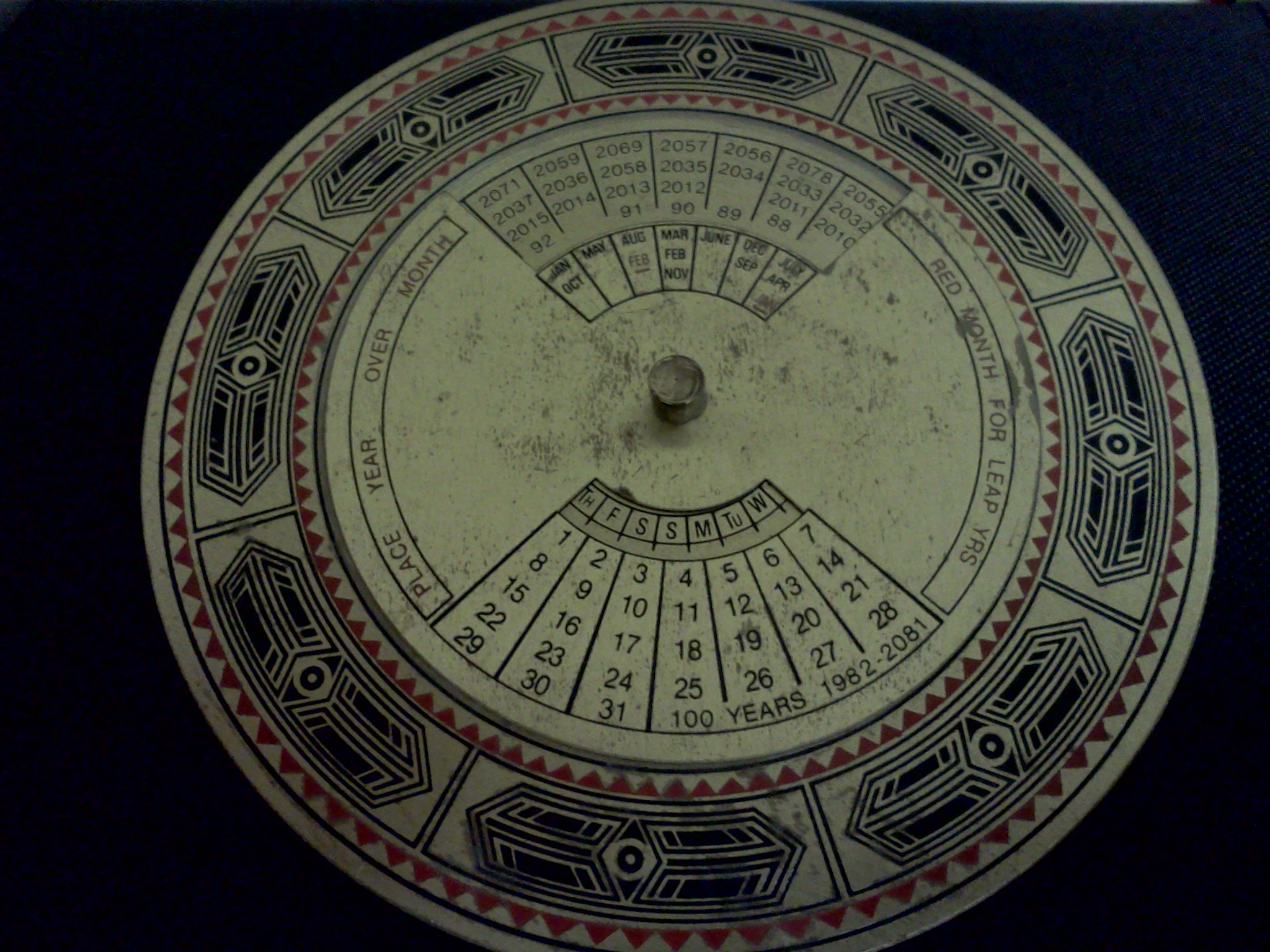- About MAA
- Membership
- MAA Publications
- Periodicals
- Blogs
- MAA Book Series
- MAA Press (an imprint of the AMS)
- MAA Notes
- MAA Reviews
- Mathematical Communication
- Information for Libraries
- Author Resources
- Advertise with MAA
- Meetings
- Competitions
- Programs
- Communities
- MAA Sections
- SIGMAA
- MAA Connect
- Students
- MAA Awards
- Awards Booklets
- Writing Awards
- Teaching Awards
- Service Awards
- Research Awards
- Lecture Awards
- Putnam Competition Individual and Team Winners
- D. E. Shaw Group AMC 8 Awards & Certificates
- Maryam Mirzakhani AMC 10 A Awards & Certificates
- Two Sigma AMC 10 B Awards & Certificates
- Jane Street AMC 12 A Awards & Certificates
- Akamai AMC 12 B Awards & Certificates
- High School Teachers
- News
You are here
Servois' 1813 Perpetual Calendar, with an English Translation - Francois-Joseph Servois

Figure 5. Perpetual calendar owned by Rob Bradley and Susan Petry.
François-Joseph Servois was born on July 19, 1767, in the village of Mont-de-Laval, located in the Department of Doubs close to the Swiss border. Servois attended several religious schools in Mont-de-Laval and Besançon, and studied to become a priest. He was ordained at Besançon near the beginning of the French Revolution. His religious career, however, was destined to be a short one. With the outbreak of the revolution, Servois left the priesthood in 1793 and became an officer in the Heavy Artillery. In his leisure time he studied mathematics.
During his first few years in the military, Servois began to suffer from poor health and he requested a transfer into the field of academia. By virtue of a recommendation from the great mathematician Adrien-Marie Legendre (1752-1833), he was assigned his first teaching position at the artillery school in Besançon on July 7, 1801. He served on the faculty at numerous artillery schools during his academic career, including at Besançon (1801), Châlons (March 1802 - December 1802), Metz (December 1802 - February 1808, 1815-1816), and La Fére (February 1808-1814, 1814-1815). Additionally, Servois fought in several well-known battles, such as the crossing of the Rhine and the battle at Neuwied (1796-97), and the final battle in March of 1814 to defend Paris from the Austrian and Prussian armies. Interestingly, the official French records indicate that he participated in the Siege of Maastricht; however, the history of the First Foot Artillery Regiment, the attachment with which he served, does not mention it having taken part in the battle. Either there is an error in the records or Servois was sent alone to Maastricht, rather than with the entire Regiment.
Servois' research spanned several areas, such as mechanics, geometry, and calculus. However, his best known work is his “Essay on a New Method of Exposition of the Principles of Differential Calculus” [Servois 1814b], which treated the foundations of the differential calculus. In this essay, he gave the terms “commutative” and “distributive” their first mathematical meanings. On May 2, 1817, Servois was assigned his final position as Curator of the Artillery Museum, which is currently part of the Museum of the Army in Paris. He applied for retirement in 1827, and was finally granted his retirement in 1828 [Aebischer and Languereau]. He retired to his hometown of Mont-de-Laval and lived with his sister and his two nieces until his death on April 17, 1847. Interested readers can refer to Petrilli [2010] for further biographic information and a review of Servois' other mathematical works.
Salvatore J. Petrilli, Jr. (Adelphi University), "Servois' 1813 Perpetual Calendar, with an English Translation - Francois-Joseph Servois," Convergence (June 2012), DOI:10.4169/loci003884




